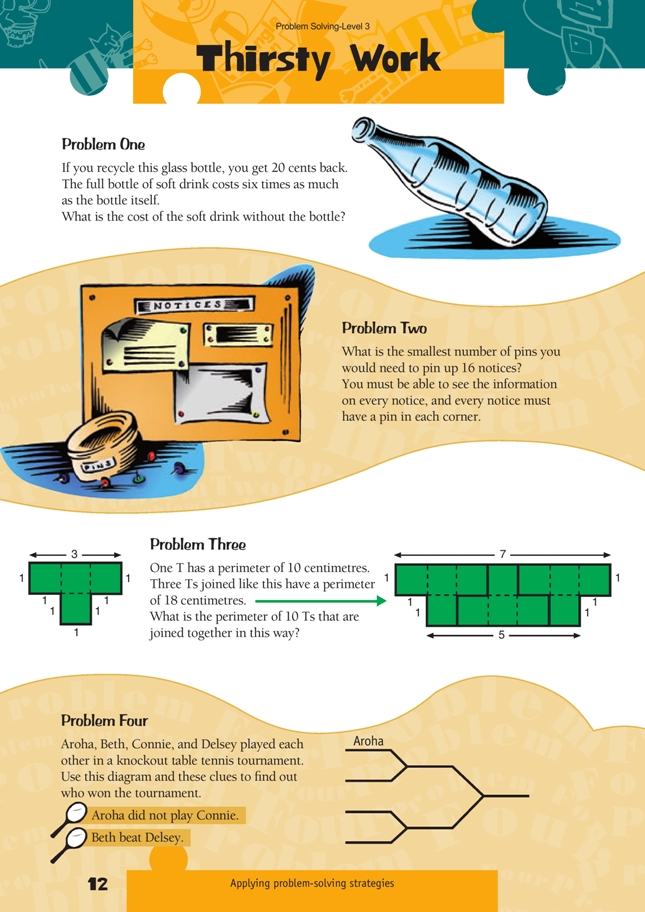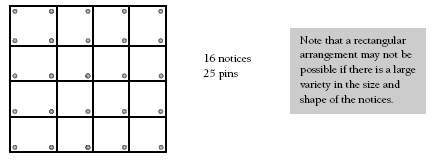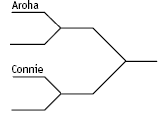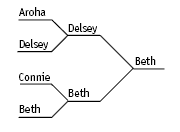These are level 4 number, algebra and statistics problems from the Figure It Out series.
A PDF of the student activity is included.
Click on the image to enlarge it. Click again to close. Download PDF (168 KB)
use ratios to solve problems (Problem 1)
use diagrams to find and continue a sequential pattern (Problems 2 and 3)
use a tree diagram to find outcomes (Problem 4)
Problem One
If the bottle is worth 20 cents, the cost of a full bottle is six times that: 6 x 20c = $1.20. This means that the soft drink is worth $1 ($1.20 – 0.20). Another way to think of the problem is to use fractions.
One-sixth of the cost of the full bottle is 20 cents, so the remaining five-sixths must cost 5 x 20c = $1.
Students may enjoy similar ratio problems, such as: “There are half as many ducks as geese in the farmyard. Altogether there are 27 birds. How many geese are there?”
Problem Two
Students need to find which arrangement of the notices minimises the number of pins needed. Using sheets of paper with counters to represent the pins will help model the problem. Adding each new sheet by using the least number of pins leads to the best solution:
Continuing in this way, students will see that a rectangular arrangement will use the least number of pins.
This problem can be extended to find the least number of pins for other arrangements of 16 newsletters, such as in groups of four or one central newsletter surrounded by groups of three.
Problem Three
Applying algebraic reasoning will help to simplify the problem. In particular, making a table allows the student to use number patterns.
With each T that is added, the perimeter increases by 4 centimetres.
The diagram above shows the position of the 4 centimetres added each time.
Students can extend the table to find the perimeter values by adding four each time.
More advanced students will realise that they can multiply by four. For example,

Problem Four
Students will need to apply the clues logically and use a systematic recording strategy. Making name tags for the players can be useful when trying out possibilities.
Here is one way of working through the problem:
Aroha did not play Connie. This leaves two possible placements for the other players.
Possibility 1
The second clue is that Beth beat Delsey.
This is only possible if they both won their first round games and met in the final.
Possibility 2
Similarly, the only way that Beth can beat Delsey is if they meet in the final.
Answers to Problems
1. $1
2. 25 pins (in a 4 x 4 arrangement)
3. 46 cm
4. Beth








